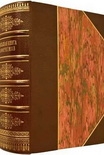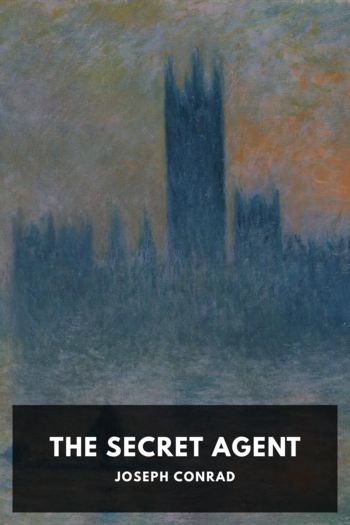Hidden History: Lost Civilizations, Secret Knowledge, and Ancient Mysteries, Brian Haughton [books you need to read .TXT] 📗

- Author: Brian Haughton
Book online «Hidden History: Lost Civilizations, Secret Knowledge, and Ancient Mysteries, Brian Haughton [books you need to read .TXT] 📗». Author Brian Haughton
The ancient sacred city of Chichen Itza is located in the jungle of the northeastern Yucatan peninsula, 75 miles southeast of Merida. The reason for the Maya locating their sacred city here can be best explained by the presence of natural sink holes, known in the area as cenotes, as the lack of aboveground rivers made an all year round water supply essential. The previously mentioned Cenote of Sacrifice or Sacred Cenote is the most famous of these sink holes, and was used by the Maya as a place for ritual offerings to their rain god Chaac. During periods of extreme drought, it seems that humans were also sacrificed here in order to propituate the god.
Chichen Itza is generally thought to have been founded in A.D. 514 by the priest Lakin Chan, also known as Itzamna, and at its height comprised several hundred buildings. The ruins of the city can be divided into two groups, one belonging to the Classic Maya period (A.D. 250-900) and constructed between the seventh and 10th centuries A.D., and the other belonging to the Maya-Toltec period, which lasted from the late 10th century up to the beginning of the 13th century. The Toltecs, another Native American people probably originating in central Mexico, made Chichen Itza their capital in the late 10th century A.D., though whether this was by force or by some kind of agreement with the Maya is not known. It was during the MayaToltec period of the site that Chichen Itza's most spectacular ruins were constructed.
The structure that people most identify with the Mayans and Chichen Itza is probably the giant stepped pyramid that dominates the site, called the Temple of Kukulcan and also known by its Spanish name of El Castillo. The temple is actually composed of two buildings, a larger, more grand pyramid built over an earlier, more modest structure. The whole building is around 180 feet tall and each of its four sides once had 91 steps,
which, in addition to the platform crowning the structure, makes 365 steps, one for each day of the year. Further evidence for the calendrical significance of the temple are its 52 panels (representing the 52-year cycle of the Mayan calendar round), and 18 terraces (for the 18 months in the Mayan religious year). The pyramid is also oriented to accurately mark the occurrences of the equinoxes. Inside the earlier of the two pyramid-temples there are narrow steps leading to a secret chamber at the top of the structure, where archaeologists discovered the stone-carved Throne of the Jaguar, painted in brilliant red with jade spots, and also a sculpture of a Chac Mool figure. This latter object is a type of stone altar consisting of a reclining figure holding a bowl or tray over its stomach. It is thought that this tray was used for offerings of incense to the figure, who would act as a messenger to the gods. The bowl may also have been used to hold human hearts cut from sacrificial victims. During the spring or autumn equinox (March 21st and September 21st) when the sun's light hits the steps on the northern side of the pyramid, it creates the spectacular illusion of the shadow of a moving serpent slithering up the pyramid as the sun moves across the sky.
Photograph by Aaron Logan (Creative Commons License. AttributionShareAlike 1.0)
El Castillo (the Castle) at Chichen Itza.
East of El Castillo stands the Templo de los Guerreros or Temple of the Warriors, a huge, flat-topped, pyramidal structure, which originally possessed a wood and plaster roof. The temple has pillars sculpted in basrelief in the likeness of warriors, many of which still retain some of their original color. Surrounding the temple are hundreds of columns, the remains of ruined buildings known as the Group of a Thousand Columns.
On the western side of the site is The Temple of the Jaguars. This structure derives its name from the procession of jaguars carved on the front of the upper part of the building, and was constructed in the Maya Toltec architectural style from around A.D. 900 to 1100. Inside the temple are some of the most fascinating mural paintings in Chichen Itza, including one example which depicts an ancient battle between the Mayas and the Toltecs. Adjacent to the Temple of the Jaguars is the Ball Court Complex (Juego de Pelota), one of seven courts for playing the Meso-American ballgame discovered at Chichen Itza. The dimensions of this particular court, however, are 544 by 223 feet, making it the largest ball court ever built in central America, as well as the best preserved. No one is quite sure how this ballgame, called Pok-Ta-Pok by the Maya, was played, though it was probably more of a ritual ceremony than a recreational game. Consensus of opinion is that in order for a team to score, one of their
players had to pass a firm leather or rubber ball through the openings of the stone scoring rings, located on opposite walls of the court, without using his hands or feet. This could be a deadly pastime, as it is believed that the captain of either the winning or losing team (researchers are not quite sure) was decapitated at the end of the game as an offering to the gods. However, the size of this particular ball court at Chichen Itza has persuaded a number of scholars that actually playing the game there would have been out of the question. Due to the enormous size of the court it would not have been possible for a





Comments (0)